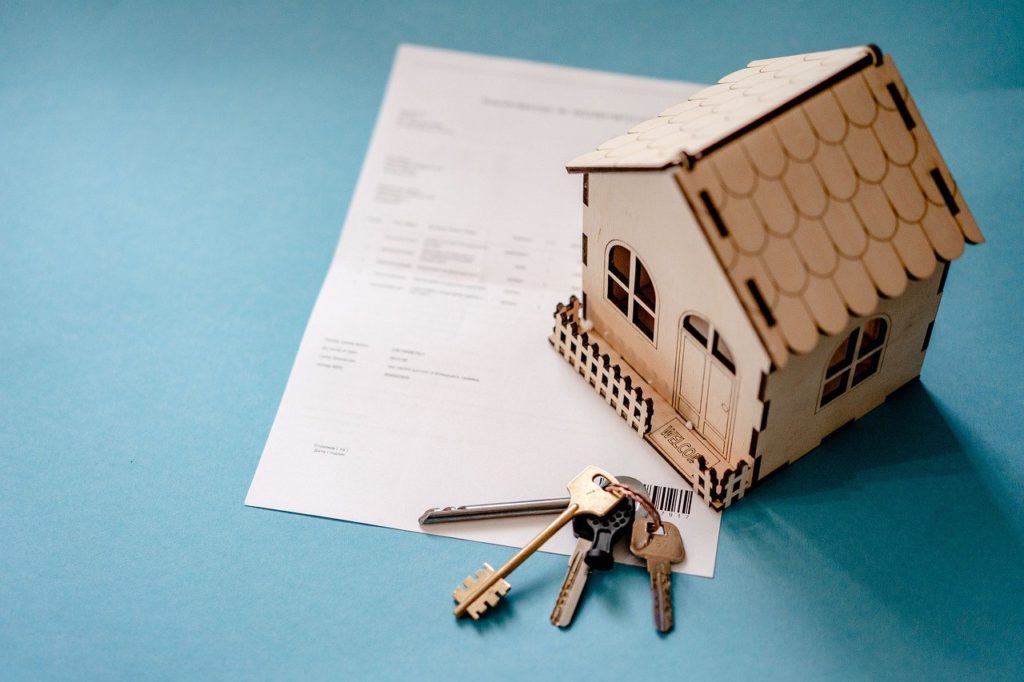What Are Conventional Mortgage Loans
Are you thinking about buying a home and considering a conventional mortgage loan? If so, this article is tailored for you. Whether you’re a first-time homebuyer or someone looking to refinance, understanding conventional mortgage loans is the key to making informed decisions.
In this comprehensive guide, we’ll equip you with the knowledge you need to navigate the world of conventional mortgage loans effortlessly. From the basics of what a conventional loan is to the benefits and eligibility requirements, we’ll cover it all.
With our expertise in the mortgage industry, we break down complex concepts into easy-to-understand terms, ensuring you have a clear understanding of the process.
How do conventional mortgage loans work?
Conventional mortgage loans, also known as conforming loans, are loans that are not guaranteed or insured by any government agency. Unlike FHA or VA loans, conventional loans are made by private lenders, such as banks, and credit unions. These loans follow the guidelines set by Fannie Mae and Freddie Mac, two government-sponsored enterprises.
One of the key aspects of conventional mortgage loans is the down payment requirement. Typically, borrowers may put down 20% of the home’s purchase price. However, lenders also offer conventional loans with lower down payment options, such as 3%, 5%, 10%, etc. but any downpayment of less than 20% requires private mortgage insurance (PMI).
Conventional loans also come with fixed or adjustable interest rates. Fixed-rate loans have a set interest rate for the entire loan term, providing stability and predictability in monthly payments. On the other hand, adjustable-rate loans have an interest rate that can fluctuate over time, which can be beneficial if interest rates are expected to decrease.
Pros and cons of conventional mortgage loans
Like any financial product, conventional mortgage loans come with their own set of advantages and disadvantages. Understanding these pros and cons can help you determine if a conventional loan is the right choice for your specific needs.
Pros of conventional mortgage loans
• No mortgage insurance: If you make a down payment of 20% or more, you can avoid paying private mortgage insurance (PMI). Anything above 80% LTV requires MI.
• Downpayment for First Time Homebuyer special program (HomeReady Product) for low income of 3% is available. As stated; income limits apply.
• Flexibility: Conventional loans offer more flexibility in terms of loan amounts, property types, and eligibility requirements.
• No funding fee or UpFront MIP that is added to the loan- Unlike VA loans or FHA Loans
Cons of conventional mortgage loans
• Somewhat higher interest rates: Conventional loans generally have interest rates that are slightly higher compared to other types of loans, such as FHA and VA loans.
• Higher credit requirements: Conventional loans typically require a higher credit score compared to other types of loans. Some lenders require a minimum of 680 credit scores. The credit score is based on the lower middle score of the applicant(s).
• Stricter underwriting guidelines: Conventional loans have more stringent underwriting guidelines.
• Conventional loans are not offered or insured by the government. Unlike FHA or VA loans, conventional loans do not have government backing, meaning lenders take responsibility for ensuring the guidelines are met.
These pros and cons should be carefully considered when deciding if a conventional mortgage loan is the right fit for you. It’s essential to weigh the advantages and disadvantages based on your financial situation and long-term goals.
Understanding the different types of conventional mortgage loans
Conventional mortgage loans come in various forms, each designed to meet different borrower needs. Understanding the different types of conventional loans can help you choose the one that aligns best with your unique circumstances.
Conforming loans: Conforming loans are the most common type of conventional loans. These loans adhere to the loan limits set by Fannie Mae and Freddie Mac, which vary based on the property’s location. Conforming loans offer competitive interest rates and are available for primary residences, second homes, and investment properties.
Non-conforming loans: Non-conforming loans, also known as jumbo loans, exceed the loan limits set by Fannie Mae and Freddie Mac. These loans are suitable for borrowers who need to finance properties with higher purchase prices. Non-conforming loans often have stricter qualification requirements and depending upon the entire criteria of the loan file could have higher interest rates.
Fixed-rate loans: Fixed-rate loans have a consistent interest rate throughout the loan term, providing stability and predictability in monthly payments. These loans are ideal for borrowers who prefer a set budget and want to avoid the risk of rising interest rates.
Adjustable-rate loans: Adjustable-rate loans, also known as ARMs, have an interest rate that can change over time. These loans often have a fixed rate for an initial period, typically 3, 5, 7, or 10 years, after which the rate adjusts periodically based on market conditions. ARMs can be beneficial if you expect interest rates to decrease or plan to sell or refinance the property before the rate adjusts.
Qualifying for a conventional mortgage loan
To qualify for a conventional mortgage loan, several factors are taken into consideration. Lenders assess your financial situation to determine if you meet their eligibility requirements. Here are some key factors lenders consider when evaluating your application:
Credit score: Your credit score plays a significant role in your eligibility for a conventional loan. Lenders typically require a minimum credit score of 680 or higher. However, remember that a higher credit score can help you secure better interest rates and loan terms.
Debt-to-income ratio: Your debt-to-income ratio (DTI) compares your monthly debt payments to your gross monthly income. Lenders prefer borrowers with a DTI of 43% or lower, although some may accept higher ratios under certain circumstances.
Employment history: Lenders look for stable employment and income history. Typically, a two-year work history in the same field or industry is preferred. Self-employed individuals may be required to provide additional documentation to prove income stability.
Down payment: While conventional loans generally require a down payment of 20%, some lenders offer options with lower down payment requirements. However, a lower down payment may mean paying for private mortgage insurance (PMI).
Reserves: Lenders may require you to have cash reserves available after closing on the loan. Reserves act as a safety net and demonstrate your ability to handle unexpected expenses or financial challenges.
It’s important to note that these requirements may vary among lenders. It’s always a good idea to shop around and compare offers from different lenders to find the best fit for your financial situation.
The application process for a conventional mortgage loan
The application process for a conventional mortgage loan typically involves several steps. While the process may vary slightly depending on the lender, here is a general overview of what to expect:
1. Pre-approval: Before you start house hunting, it’s beneficial to get pre-approved for a loan. Pre-approval involves submitting your financial information to a lender who will assess your eligibility. This step gives you an idea of how much you can afford and strengthens your position as a serious buyer.
2. Gather necessary documents: To complete your loan application, you’ll need to gather various documents, including proof of income, bank statements, tax returns, and identification. Be prepared to provide any additional documentation requested by the lender during the underwriting process.
3. Submit your application: Once you have all the necessary documents, you can submit your loan application to the lender. This can typically be done online or in person. Review the application carefully and provide accurate information to avoid delays or complications.
4. Underwriting and approval: After submitting your application, the lender will review your financial information and assess your eligibility. This process, known as underwriting, involves evaluating your creditworthiness, verifying your income and assets, and ensuring you meet the lender’s requirements. If your application is approved, you’ll receive a loan commitment letter outlining the terms and conditions of the loan.
5. Closing: Once your loan is approved, you’ll proceed to the closing stage. The loan documents are finalized during this step, and you’ll sign the necessary paperwork to complete the transaction. You’ll also pay any remaining closing costs and provide the down payment. After closing, the funds are disbursed, and you officially become a homeowner.
Navigating the application process can be complex, but working with an experienced loan officer can help simplify the process and ensure a smooth transaction. They can guide you through each step, answer your questions, and provide expert advice tailored to your specific situation.
Tips for getting the best interest rates on conventional mortgage loans
Securing a favorable interest rate on your conventional mortgage loan can save you thousands of dollars over the life of the loan. Here are some tips to help you get the best interest rates:
1. Improve your credit score: A higher credit score typically translates to better interest rates. Take steps to improve your credit score by paying bills on time, reducing credit card balances, and avoiding new debt.
2. Save for a larger down payment: Making a larger down payment can lower your loan-to-value ratio (LTV) and reduce the perceived risk for lenders. A lower LTV may lead to better interest rates.
3. Shop around: Don’t settle for the first offer you receive. Shop around and compare mortgage rates from multiple lenders to find the most competitive rate. Consider both national and local lenders, as they may offer different rates and terms.
4. Consider buying points: Buying points, also known as discount points, allows you to pay upfront to lower your interest rate. Each point typically costs 1% of the loan amount and can reduce the interest rate by a certain percentage.
5. Get a rate lock: Once you find a favorable interest rate, consider locking it in. A rate lock guarantees the rate for a specified period, protecting you from rate increases while you complete the loan process.
By implementing these tips, you can increase your chances of securing a lower interest rate and potentially save thousands of dollars over the life of your loan.
Common misconceptions about conventional mortgage loans
There are several common misconceptions about conventional mortgage loans that can confuse potential borrowers. Let’s debunk a few of these myths to provide clarity:
Myth 1: Conventional loans are only for wealthy individuals: While conventional loans may require a larger down payment compared to FHA loans, they are not limited to wealthy individuals. With various down payment options available and competitive interest rates, conventional loans are accessible to a wide range of borrowers.
Myth 2: You need perfect credit to qualify for a conventional loan: While a higher credit score can help you secure better loan terms, you don’t need perfect credit to qualify for a conventional loan. Many lenders offer conventional loans to borrowers with credit scores as low as 620, although higher credit scores can open up more options and better rates.
Myth 3: Conventional loans take longer to close: The time it takes to close a loan depends on several factors, including the lender’s efficiency and the complexity of the transaction. Conventional loans can often close within a similar timeframe as other loan types if all necessary documents are provided promptly.
Myth 4: Conventional loans are always more expensive: While conventional loans may require a larger down payment and have stricter credit requirements, they do not always become more expensive.
This all depends upon the product type, the loan to value, the credit, and the entire file just like it does for other types of loans.
It’s important to separate fact from fiction when considering a conventional mortgage loan. By understanding the truth behind these misconceptions, you can make informed decisions that align with your financial goals.
Alternatives to conventional mortgage loans – *this link is to the Ultimate Guide to FHA Loans
While conventional mortgage loans are a popular choice for many homebuyers, they may not be the best fit for everyone. Here are some alternative options to consider:
FHA loans: FHA loans are backed by the Federal Housing Administration and are designed for borrowers with lower credit scores and smaller down payments. These loans often have more flexible qualification requirements, making them accessible to a broader range of borrowers.
VA loans: VA loans are available to eligible veterans, active-duty service members, and surviving spouses. These loans offer competitive interest rates, no down payment, and no mortgage insurance requirements. VA loans are backed by the Department of Veterans Affairs.
USDA loans: USDA loans are offered by the United States Department of Agriculture and are designed to help low-to-moderate-income borrowers purchase homes in rural areas. These loans often have low or no down payment requirements and competitive interest rates.
Jumbo loans: Jumbo loans are suitable for borrowers who need to finance properties with higher purchase prices that exceed the loan limits set by Fannie Mae and Freddie Mac. These loans often have stricter qualification requirements and higher interest rates.
Conventional loans with PMI: If you don’t have a 20% down payment, you may opt for a conventional loan with private mortgage insurance (PMI). PMI protects the lender in case of default and is typically required when the down payment is less than 20% of the home’s purchase price.
When considering alternative options, it’s crucial to weigh the advantages and disadvantages based on your specific situation. Consulting with a mortgage professional can help you determine the best loan option for your needs.
Conclusion: Is a conventional mortgage loan right for you?
After exploring the ins and outs of conventional mortgage loans, you should now have a solid understanding of how they work, their pros and cons, and the eligibility requirements. Armed with this knowledge, you can make an informed decision about whether a conventional mortgage loan is right for you.
Remember, each borrower’s financial situation is unique, and what works for one person may not work for another. It’s essential to evaluate your long-term goals, financial capabilities, and personal preferences when choosing a mortgage loan.
If you’re ready to take the next step, reach out to a trusted mortgage lender or loan officer who can guide you through the process. With their expertise and your newfound knowledge, you’ll be well-equipped to navigate the world of conventional mortgage loans and make confident decisions on your path to homeownership.
**Hey, just so you know, I have underwritten and approved probably a thousand or so loans that were Conventional Mortgages. Yes, there were some declined applications as well.
*Disclaimer: This article is for informational purposes so that you can understand the different aspects of Conventional Mortgage Loans and lending. However, this does not constitute what different lenders may require for their programs.
Here is some additional explanation for What Are Conventional Loans



